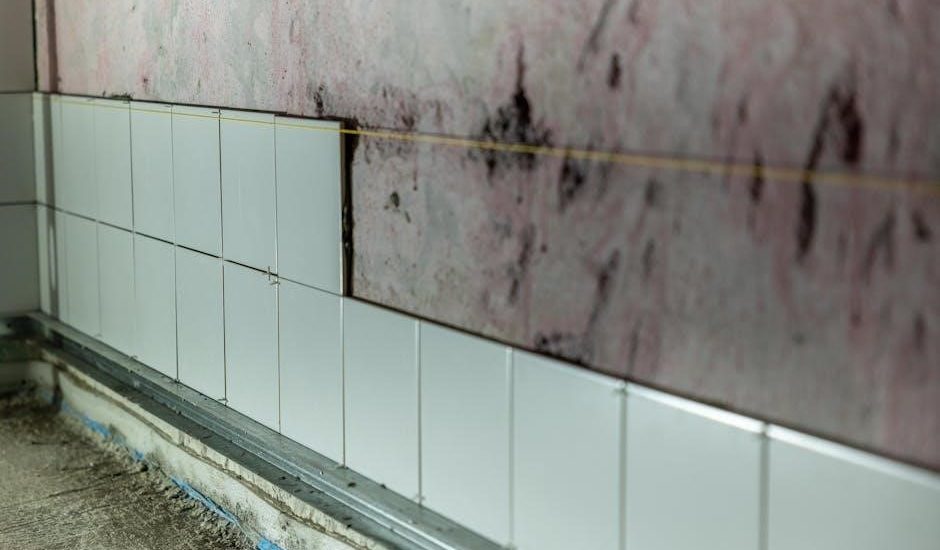KraftMaid crown molding enhances kitchen aesthetics with elegant designs, offering durability and style. This guide provides step-by-step instructions for successful installation, ensuring a professional finish.

Overview of KraftMaid Crown Molding
KraftMaid crown molding is a popular choice for enhancing kitchen cabinetry with its elegant and customizable designs. Available in various styles, it complements both traditional and modern aesthetics. The molding is crafted from high-quality materials, ensuring durability and a polished finish. Designed to fit seamlessly with KraftMaid cabinets, it offers a professional look that elevates the overall design of the space. Crown molding is not only decorative but also serves to create a cohesive transition between cabinets and ceilings. With a range of finishes and profiles, it allows homeowners to tailor the look to their unique preferences. Proper installation ensures a flawless appearance, making it a worthwhile addition to any kitchen renovation project. KraftMaid crown molding is a practical and stylish solution for achieving a sophisticated kitchen design.

Preparation for Installation
Begin by inspecting KraftMaid crown molding for damage and verifying all pieces. Gather tools like a miter saw, pencil, and measuring tape. Clear the workspace and plan the layout to ensure a smooth process.
Measuring Cabinet Tops and Walls
Accurate measurements are crucial for a seamless KraftMaid crown molding installation. Begin by measuring the length and width of all cabinet tops and adjacent walls using a tape measure. Mark these dimensions on paper to ensure precise cuts later. Measure each section individually, as cabinet sizes may vary slightly. Use a pencil to transfer measurements to the molding pieces, ensuring alignment with the cabinet edges. Double-check all measurements to avoid errors. For corners, measure the angle to guarantee proper fitment. Finally, add a few extra inches to each measurement to account for miter cuts and fitting adjustments. This step ensures the molding fits perfectly, creating a polished, professional appearance.
Gathering Necessary Tools and Materials
To ensure a smooth KraftMaid crown molding installation, gather all essential tools and materials beforehand. Start with a tape measure, pencil, and paper for marking measurements. A 1-by-2 inch board is useful for creating a guide fence on your miter saw. Invest in a high-quality miter saw for precise cuts and a finish nail gun for secure installation. Additional tools include clamps, a coping saw (for intricate cuts), and a caulk gun for sealing gaps. Materials needed include the KraftMaid crown molding pieces, 1.5″ or 2″ finish nails, wood glue, and caulk. For finishing, have paint or stain ready. Safety gear like goggles and a dust mask is also essential. Organizing these tools and materials in advance ensures efficiency and prevents delays during the installation process.

Measuring and Cutting Crown Molding
Measure the cabinet tops and walls to determine molding lengths. Mark the pieces and use a miter saw for precise cuts, ensuring a perfect fit.
Using a Miter Saw for Precise Cuts
Using a miter saw is essential for achieving precise cuts in KraftMaid crown molding. Begin by setting up your saw with a consistent line on the cabinet face, ensuring accuracy. Measure the molding carefully, mark the cut lines, and secure the piece firmly. Use the saw’s angle settings to make straight or angled cuts, depending on the design. For complex joints, create a guide fence to maintain uniformity. Always use a carpenter’s square to verify angles and practice cuts on scrap material first. This method ensures clean, professional-looking results, making the installation process smoother and more efficient.
Marking and Fitting Molding Pieces
Accurate marking and fitting are crucial for seamless KraftMaid crown molding installation. Measure the cabinet tops and walls to determine the required lengths, adding a little extra to each piece. Use a pencil to mark cut lines and angles, ensuring they align with the cabinet edges. Create a guide fence to maintain consistency and test-fit each piece before cutting. For corners, measure carefully to achieve tight joints. Use a carpenter’s square to verify angles and ensure a professional finish. Proper fitting prevents gaps and misalignments, ensuring the molding looks cohesive and polished. This step is essential for a smooth installation process and a visually appealing result.

Installing Crown Molding
Align the molding precisely with the cabinet tops and walls, securing it with a finish nail gun. Ensure a flush fit and check alignment as you install each piece.
Aligning and Securing Molding with a Finish Nail Gun
Begin by carefully aligning the crown molding with the marked measurements on the cabinet tops and walls. Use a level to ensure straight alignment and a laser guide for accuracy. Hold the molding firmly in place and use a finish nail gun to secure it with 1-2″ finish nails, spacing them 12-16 inches apart. Start from the center and work outward to avoid misalignment. For corners, pre-drill holes to prevent splitting and use angled nails for a tight fit. Double-check the molding’s position before nailing to ensure proper adhesion. Use clamps to hold pieces in place while nailing for a secure and even installation. This method ensures a professional-looking finish with minimal gaps or errors.

Handling Corners and Joints
Handling corners and joints requires precision to ensure a seamless look. Start by using a miter saw to cut the crown molding at 45-degree angles for 90-degree corners. This creates a flush joint. For more intricate profiles, a coping saw or jigsaw can be used to make curved cuts. When securing, use a finish nail gun with 1-2″ nails to avoid splitting the wood. Apply a small bead of caulk to fill any gaps, smoothing it with a damp tool for a clean finish. Clamp the molding in place while nailing to maintain alignment. Measure carefully and consider using shims for uneven areas. Sand any rough edges or nail holes before finishing. Safety gear like gloves and safety glasses is essential when using power tools. This meticulous approach ensures a professional and polished result.
Finishing Touches
Caulk all gaps and seams for a seamless finish. Sand the molding to smooth out any rough edges or nail holes. Paint or stain to match your kitchen’s style.
Caulking and Painting the Molding
Caulking and Painting the Molding
After installing the crown molding, apply caulk to fill any gaps or seams where the molding meets the walls or cabinets. Use a high-quality, paintable caulk and smooth it with a damp finger or caulk tool for a seamless finish. Allow the caulk to dry completely according to the manufacturer’s instructions. Next, lightly sand the entire molding to ensure a smooth surface, removing any dust or debris with a tack cloth. If necessary, prime the molding to ensure better paint adhesion. Finally, paint or stain the molding to match your kitchen’s style and color scheme. Apply thin, even coats, allowing each coat to dry before applying the next; Once complete, inspect the molding for any imperfections and touch up as needed for a polished, professional look.
Additional Resources and Support
Access official KraftMaid guides, instructional videos, and troubleshooting tips for crown molding installation. Visit their website or contact customer support for personalized assistance and materials.
Accessing KraftMaid Installation Guides and Videos
KraftMaid provides comprehensive installation guides and tutorial videos to help homeowners and professionals achieve a flawless crown molding installation. These resources are available on the official KraftMaid website, ensuring easy access to step-by-step instructions, diagrams, and troubleshooting tips. The guides cover topics such as measuring, cutting, and securing crown molding, while the videos demonstrate techniques for handling corners and joints. Additionally, KraftMaid offers customer support through their website, allowing users to contact experts for personalized assistance. For those who prefer hands-on learning, the video tutorials are an excellent way to visualize the installation process and ensure accuracy. By utilizing these resources, you can confidently complete your crown molding project with professional results.





